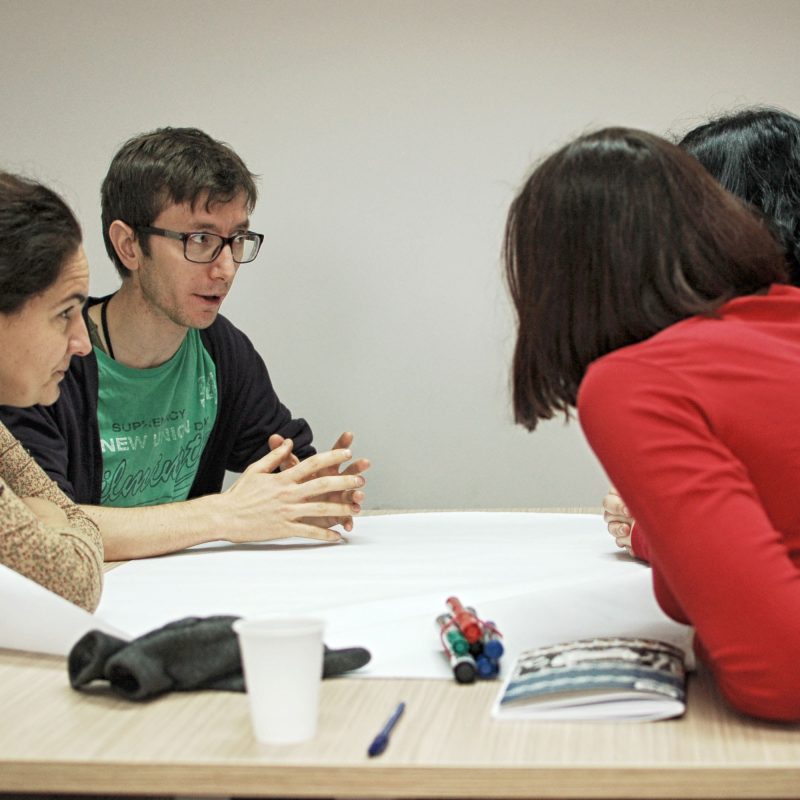
Entrepreneurship – a career path
June 23, 2017
How about a social business?
June 26, 2017How much money do you need?
Use this scenario to help young people to gain the basic knowledge on personal budgeting and financial education.
When to use it:
- understanding concepts of costs / expenses and revenues / incomes;
- learning about ways of saving.
Size of the group: 5 to 15 people
Age of the group: over 14 years old
Time:
Preparation: 30 minutes
Presentation: 90 minutes
Materials:
- flipchart papers
- A4 papers
- pens
- markers
- a box of chocolate / a similar prize
How:
Preparation:
- Print out the monthly expenses-revenues handouts, available at the end of this exercise;
- Check information about the minimum and average wage in your country, and how many people make the minimum or the average wage.
Presentation:
- Brainstorm with the participants on what they usually spend their money or on what their families spend their money. Introduce to them the concepts of expenses – everyday living costs.
- Give each participant the monthly expenses-revenues handout, and ask them to spend 10 minutes and make a list with their monthly costs, specifying the amount of money spent and trying to put the costs under a category, such as: food, clothes, leisure activities, etc. At the same time, ask them to make a total with their monthly expenses.
- Ask each participant to calculate on what category of expenses they spend the most of their money.
- Start then a group discussion, and ask the participants if all the expenses are really needed. Ask them how they will call those expenses that are not really needed for living. The discussion should end by defining needs versus wants.
- Shortly, ask them, as a group, to identify from the following lists the needs and the wants:
- to get to school / to work
- to drive to work or school
- to eat lunch
- to eat at [choose a well restaurant in your area]
- to buy shoes
- to buy [a well known brand] shoes
- to read books
- to buy presents for my friends
- to buy a car
6. While some costs are easily identified as needs or wants, some others can start some debates. For instance, to read books, maybe the participants will identify it as a want, while you might explain that it is a need, as one needs to have access to the right education, so that he/she can have the professional career he/she wants.
7. Continue the discussion, by challenging participants about their sources of incomes/revenues. From where do they get the money? At this age, most of them might say they get the money from their parents / grandparents. Guide the discussion further, so that they can identify different categories of incomes/revenues: salaries, profit made as business, investments, loans, etc. At the same time, provide them with the information of salaries in your country (the minimum wage, the average wage, and how many people receive the minimum or the average wage).
8. Ask them to go back to their monthly expenses-revenues handout, and to calculate their monthly revenues. Then ask them to subtract the expenses from the revenues. As most of the people at this age, their revenues will be much lower than the expenses. Ask them what happens? How do they cover their monthly expenses? They will get to one of both of the ideas: savings or increase their revenues. Explain to them that increasing revenues is hard at their age, or with the first job – as most of the time, in a first job, they will make the minimum or somewhere above the minimum wage.
9. Split the participants in groups of five people, and ask them to share their monthly expenses and find together solutions for savings and reducing costs. After 10 minutes, each group present its ideas of saving. The group with the most ideas of saving will win a small present (such as a box of chocolate).
10. Ask each participant to identify a thing that they want to have or an experience that they want to live, and for which they need a certain amount of money. Ask them to make a plan for the next 6 months or one year to raise the money for what they want to buy. How much they need to save each month? What they should give up from their monthly expenses in order to be able to make the savings? How they can increase their revenues?
11. After 10 minutes, group participants in pairs, and ask them to share their saving plans.
12. Mention to the participants the possibility of using a mobile app for their personal budget and finance (see below – Other resources).
Follow-up questions
- What are the main things you learned about money today?
- What will be your first thought next time you buy something?
Possible variations
For step 3., if you want to make it more visual, you can use an excel (the graphic function; a pie), and build one of the participant’s monthly budget (expenses); the participants can understand better and visualize how much money they spent on each category.
Other resources:
12 Steps for How to Make a Budget – Personal Budgeting Tips for First Timers
http://www.moneycrashers.com/how-to-make-a-budget/
10 Best Budgeting and Personal Finance Apps
http://www.tomsguide.com/us/pictures-story/548-best-budget-expense-apps.html
You must be logged in to post a review.
Related products
-
Build an ethical and responsible business
Use this scenario to help young people learn about companies’ responsibilities towards different stakeholders, and about the basic ethical principles in business.
-
Entrepreneurship – a career path
Use this scenario to help young people to learn the differences between being an employee, a self-employed, a business owner, and an investor.
-
Lead your organization with style
Use this scenario to help young people learn about and practice different leadership styles.





Reviews
There are no reviews yet.